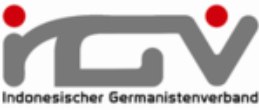DEVELOPMENT OF LEARNING MEDIA IN THE FORM OF PAPER PUPPETS FOR LEARNING GERMAN SPEAKING AT ELEMENTARY LEVEL
Abstract
German is one of the second foreign language subjects studied by Indonesian students at the Senior High School (SMA) and Madrasah Aliyah (MA) levels. There are four language skills that must be mastered in German, namely listening (Hören), speaking (Sprechen), reading (Lesen), and writing (Schreiben). Speaking (Sprechen) is one of the skills that students need to master, because with speaking skills, students can convey their intentions, desires, ideas, and opinions orally. However, in practice, students still experience difficulties in speaking German. Therefore, researchers developed paper puppet-based learning media to overcome these difficulties. Paper puppet media is a learning media made of paper in the form of cartoon images or real images with stalks to move. This study aims to produce, implement paper puppet-based learning media in learning to speak German and to find out the responses of teachers and students to the use of paper puppet media in KBM. The research method used is the development method (Research and Development). Researchers involved teachers and students of class XI-MIPA I at SMA PGII 2 Bandung as respondents who gave an assessment of the development product in the form of paper puppet media. The process of developing paper puppets is carried out by collecting information, planning, developing the initial form of the product, field testing and product revision. The results of this study are eight characters of paper puppet media. The eight characters consist of two teenage boys, two adult men, two teenage girls and two adult women. The paper puppet media has a simple mechanism to be moved and can be changed according to the needs of the theme. Product assessment was carried out using a Likert scale through a questionnaire given to teachers and students. Teachers acting as media and learning material experts gave an assessment of 97.77% (very good) of the paper puppet media and gave an assessment of 97.50% (very good) of the learning materials used. The average assessment given by students on paper puppet media is 96.42% (very good). Based on the results of this study, it can be concluded that paper puppet media can be well received by teachers and students as a supporting medium in learning to speak German. This paper puppet media can still be developed to be better.
Keywords: media, development, puppetsFull Text:
PDFReferences
Dirga, R. N. (2016). Innovation in literature learning in erman language subjects in high school. cendekia: Journal of education and learning, 10(1), 101-108.
Jauhari, M. I. (2018). The role of learning media in islamic education. piwulang: Journal of islamic education, 1(1), 54-67.
Kurnia, E., & Dewi, E. R. (2019). Efforts to develop children's beginner reading through visual media of paper puppets in group B. Journal on Education, 1(4), 582-586.
Kuswandi, A. A., & Puspita, R. D. (2022). Implementation of storytelling method in improving speaking ability of early childhood 4-6 years. Edu Happiness (Scientific Journal of Early Childhood Development), 1(1), 33-42.
Prasetya, A., & Sukasih, S. (2024). Paper puppets as an interactive learning medium in third grade elementary schools. International Journal of Elementary Education.
Priyanto, D. (2009). Development of computer-based learning multimedia. Insania: Journal of Alternative Educational Thought, 14(1), 92-110.
Riyadh, M. (2022). Application of the role play learning method in learning the material of the mini puskesmas workshop at the puskesmas management training at the health training center of the southern Kalimantan province. Pendekar: Journal of Character Education, 4(2), 32-37.
Rohman, A. H. (2022). Analysis of arabic language learning methods in madrasah diniyah al- amiriyyah blokagung. Tadris al-arabiyat: Journal of Arabic Language Education Studies, 2(1), 122-139.
Sari, D. A., Suneki, S., & Purnamasari, V. (2019). The effectiveness of snowball throwing model assisted by paper puppet media on student learning outcomes theme 7 beautiful diversity. Journal for Lesson and Learning Studies, 2(3), 301-310.
Saud, S., Burhanuddin, B., & Saud, C. F. (2019). The effectiveness of kancing gemerincing type cooperative learning model in German speaking skills of German language education study program students FPBS UNM. LP2M UNM National seminar, 0, article 0.
Sidik, M. (2019). Design and development of e-commerce with research and development method.
Journal of Informatics Engineering UNIKA Santo Thomas, 4(1), 99-107.
Surata, I. K., Sudiana, I. M., & Sudirgayasa, I. G. (2020). Meta-analysis of learning media in biology learning. Journal of Education Technology, 4(1), 22-27.
DOI: https://doi.org/10.17509/alm.v14i1.71633
Refbacks
- There are currently no refbacks.
Copyright (c) 2024 Allemania

This work is licensed under a Creative Commons Attribution-ShareAlike 4.0 International License.
This journal provides immediate open access to its content on the principle that makes research freely available to the public and supports a greater global exchange of knowledge.
This work is licensed under a Creative Commons Attribution-ShareAlike 4.0 Internasional (CC BY-SA 4.0).

_(1)_(1)_(3)_.png)

